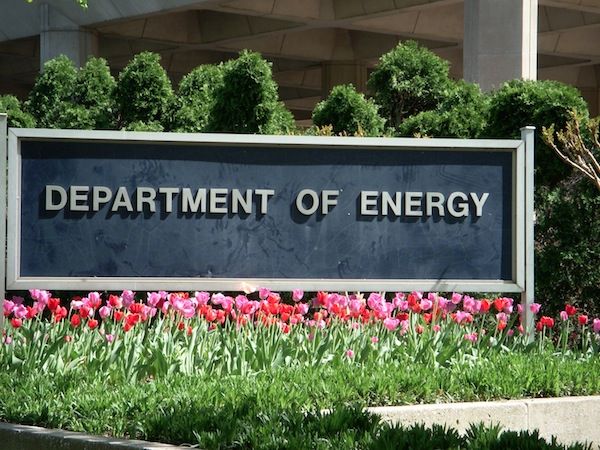Department of Energy Announces Award For Small Reactor Design


A new wave of scientific interest surrounding nuclear reactors has emerged ever since President Obama urged an "all-of-the-above" US energy policy. The Department of Energy recently announced plans to help fund a new, efficient and cost-effective blueprint for a small modular reactor design.
These reactors may be less powerful compared to their more well-known counterparts, but there are other benefits to investing in a search for a reliable small reactor design. It could boost employment, make the US less energy dependent, and make the country more competitive with other nations doing the same type of research, especially Russia, China, and India. Currently the venture is being pursued in cooperation between the private and public sectors, with support from the White House.
Overall, the DoE plans to help fund up to half the project, or $452 million, to help design a working model that could be mass-produced, transportable, and serve as a low-carbon substitute to oil and natural gas power. The rest of the costs will be shared between the other companies involved in building and distributing the power. Not all of the government money will go towards one plan or one company, giving smaller manufacturers a chance to present their designs.
Currently, one of the selected designs is from the contractor Babcock & Wilcox, a larger producer, and planned in conjunction with the Tennessee Valley Authority, which already operates three full-size reactors. Christopher Mowry, of B&W, said that the funding from DoE "lets us put our foot on the accelerator" and plan to have up to four mini-reactors online in Tennessee by 2021. The goal will be to have two designs to work with by 2022 that are approved by the Nuclear Regulatory Commission.
Steven Chu, the US Secretary of Energy, has placed a lot of confidence in these new designs and future R&D:
Just as advanced computer modeling has revolutionized aircraft design—predicting how any slight adjustment to a wing design will affect the overall performance of the airplane, for example—we are working to apply modeling and simulation technologies to accelerate nuclear R&D. Scientists and engineers will be able to stand in the center of a virtual reactor, observing coolant flow, nuclear fuel performance, and even the reactor's response to changes in operating conditions.
In terms of both environmental and national security, small modular reactors are safer. Since they are generally one-third the size of regular reactors, they cost less and can be placed underground. This shields them from terrorist attacks, and the earth can absorb shock from earthquakes.
Additionally, the nuclear waste generated from these plants is recyclable. The nuclear material is likely to continue to be uranium, but there has been a push for a material called thorium as a uranium substitute. Thorium is three times more abundant than uranium and thorium-based fuel cycles produce less waste. Uranium is the much more common core and as such, is more well known among regulators. Thorium would require more research, and likely new regulations, which could hold up the licensing and approval of a thorium-fueled SMR.
Aside from the obvious safety concerns, the other major challenge facing SMRs are the cheap natural gas prices. Philip Moor, a nuclear consultant and chairman of the SMR committee at the American Nuclear Society, notes that natural gas is a cheap, and therefore more attractive, substitute to nuclear energy. Advancements in fracking technology has made an even stronger case against SMR, but Mr. Moor noted that if a carbon tax was instituted, it would even the playing field and open the market for SMR. A carbon tax would make natural gas and oil much more expensive and nuclear research and energy more economical.
Nuclear energy powers 20% of the US energy grid. That number will likely go up in the next decade, but it depends on the success of many components, both public and private. Imagine, driving down the interstate and seeing a trailer transporting a nuclear reactor that will be planted in the ground to give power to the home. The plans are still in the design stage, years from licensing and actual construction, but given a particular necessity and encouragement to innovate, it could become a reality.



